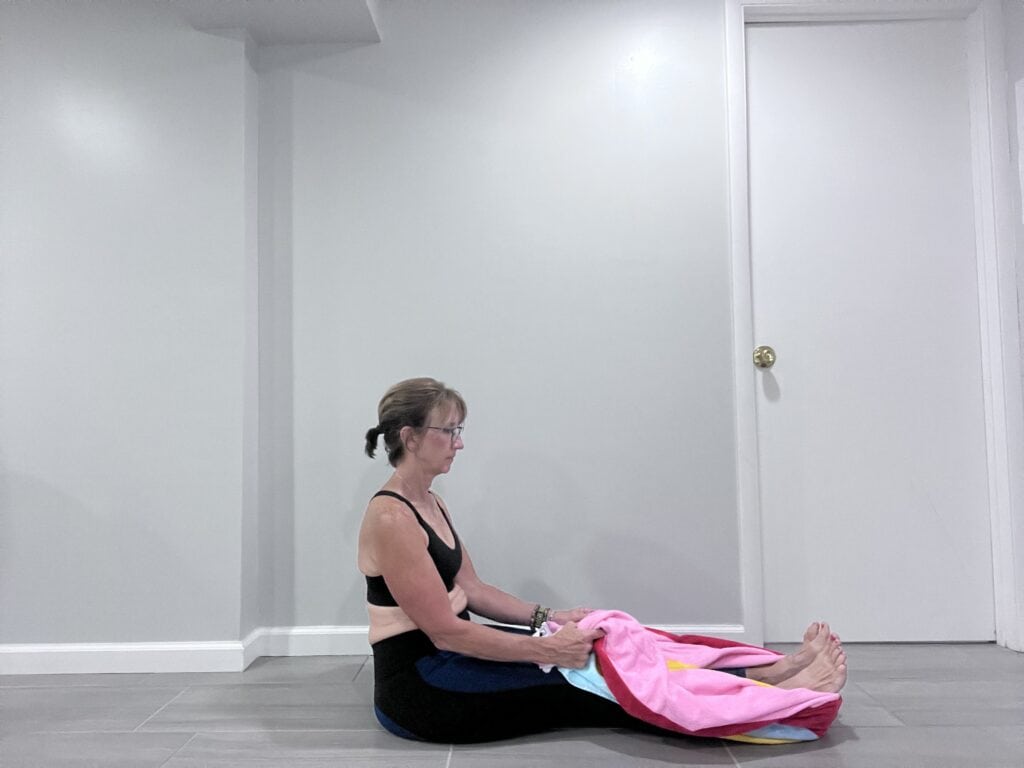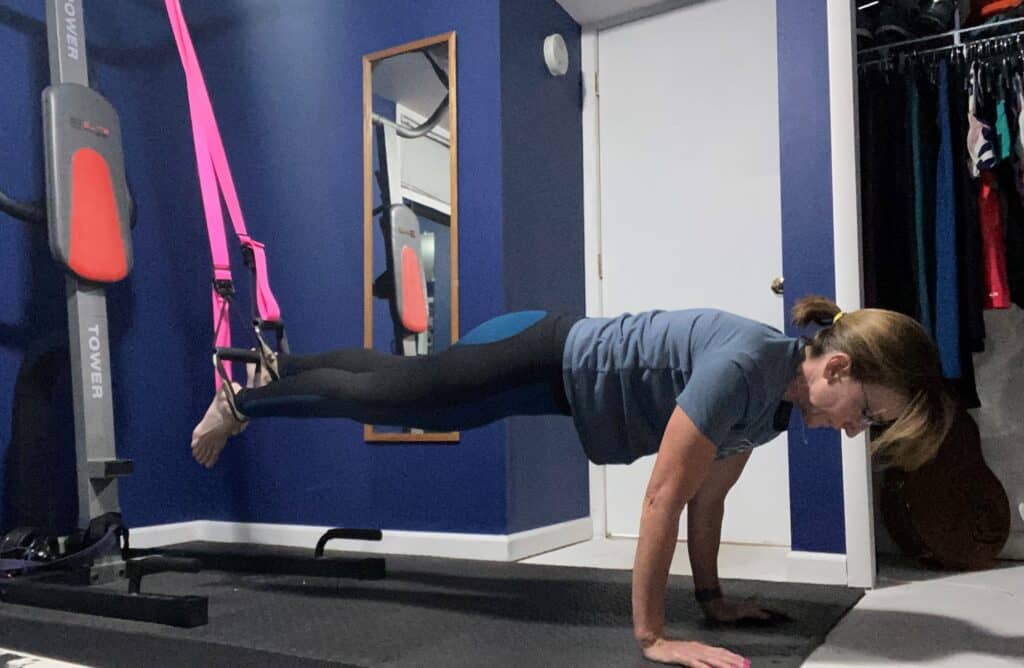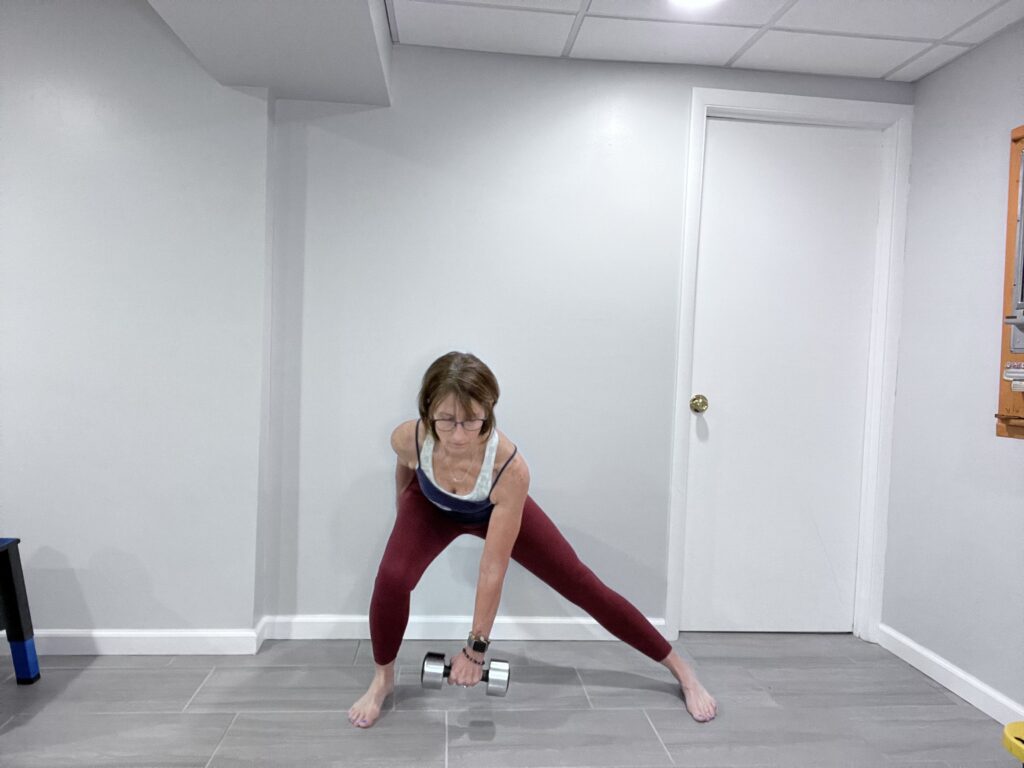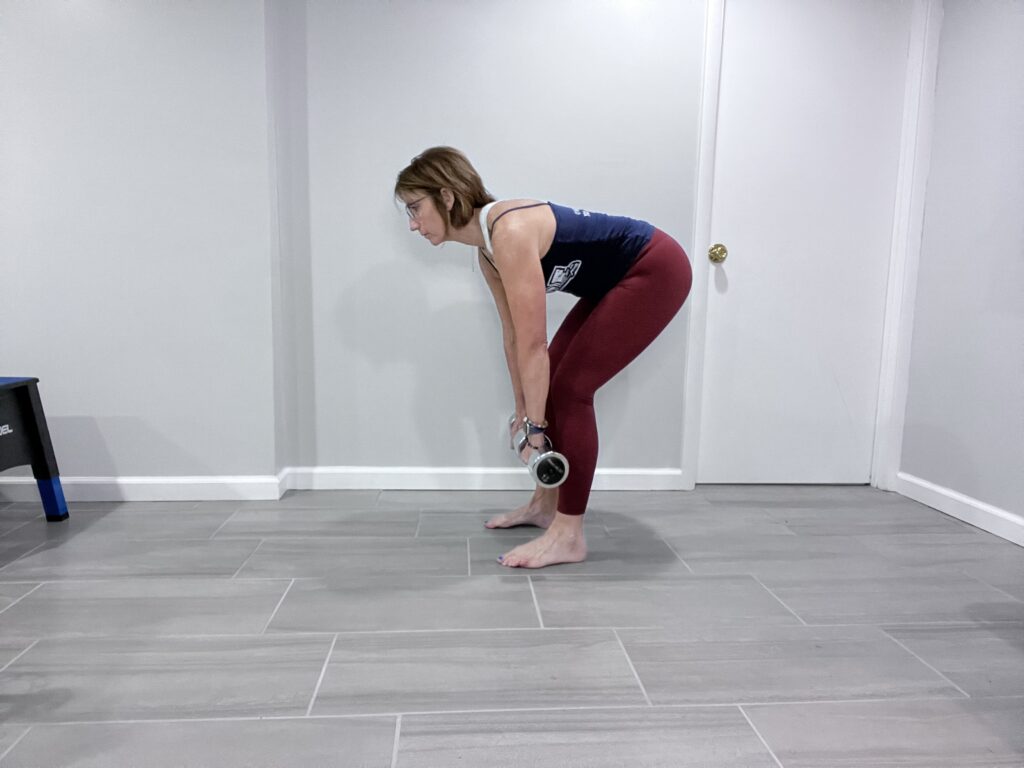12 Of the Best Alternatives to Resistance Bands
If you’re looking to step up your fitness game, resistance bands are a great addition to any workout routine.
However, as someone who loves to workout at home, I understand the importance of having versatile equipment that can be used for a variety of exercises.
Resistance bands are a popular choice for home workouts, they work in all planes to give you a complete full body workout, and they’re also incredibly portable, so you can take them with you wherever you go.
However, if you don’t have resistance bands or can’t afford them, don’t worry!
I’ve put together a list of alternative home items that can be used in place of resistance bands as well as options for weight resistance.
With these alternatives, you can still get a great workout without breaking the bank.
This post contains affiliate links. As an Amazon Associate, I earn from qualifying purchases. This means I may earn a commission, at no extra cost to you, should you choose to make a purchase using my link.
What Are Resistance Bands
Resistance bands are a popular workout tool for those who want to exercise at home or when away from home on a business trip or vacation.
They are adaptable, lightweight, and easy to use.
Resistance bands come in different colors, sizes, and resistance levels. They are made of elastic material that stretches when pulled.
The resistance level of the band determines how difficult the exercise will be.
The thicker the band, the more resistance it provides.
Resistance bands can be used for a variety of exercises, including strength training, stretching, and mobility work.
When using resistance bands, it’s important to anchor them securely to a stable surface. This can be a door, a pole, or a sturdy piece of furniture. Always make sure the band is not twisted or tangled before using it.
Resistance bands are a great alternative to weights for those who want to build strength.
They are also useful for those recovering from injuries or for those who want to improve their flexibility.
Resistance bands are affordable and can be easily stored when not in use.
Why Seek Alternatives to Resistance Bands
As someone who loves working out at home, I’m always on the lookout for new ways to challenge my muscles and mix up my routine.
Resistance bands are a popular tool for at-home workouts, but sometimes you may not have them on hand.
That’s why it’s important to know about alternatives to resistance bands that you can use with items you already have at home.
Another reason to seek alternatives to resistance bands is that they may not be suitable for everyone.
Some people may have latex allergies or may find the bands too difficult to use due to injury or mobility issues. In these cases, it’s important to have other options available.
Additionally, using different items for resistance can help target different muscle groups and add variety to your workouts.
For example, using a towel for resistance can be great for targeting your back and arms, while using a gallon of water can provide a challenging weight for lower body exercises.
Overall, seeking alternatives to resistance bands can help make your home workouts more accessible and varied, allowing you to challenge your muscles in new ways and achieve your fitness goals.
Home Item Alternatives to Resistance Bands
Leggings, Tights, Pantyhose or Suspenders
Most of us have one of these items in our closet or drawers.
Leggings, tights, pantyhose or suspenders can all work as well as resistance bands due to their elasticity.
They can be used for upper and lower body exercises such as rows, bicep curls, lunges and triceps extensions.
They are a great alternative to resistance bands.
Although it is difficult to determine the amount of resistance, they will get the job done!
Bath Towel or Bed Sheet
A bath towel or a bed sheet is also a good option that everyone has at home or while traveling.
These items can be used for a variety of exercises, such as rows, shoulder presses, bicep curls, and tricep extensions.
Simply wrap the towel or bedsheet around your hands and use it as you would a resistance band.
The best part is that you likely already have these items at home, making them a cost-effective option.


Belt
A belt is a great option to try.
Whether it’s a leather belt, a belt from a robe or an elastic belt, it can be used for several upper and lower body exercises. A few examples are resistance push-ups, lat pull downs, and many stretches.
Of course, an elastic belt would most mimic the resistance bands.
Rope
Rope is another versatile item that can be used in many ways during your workout.
This could be a jump rope, yoga strap, ski rope or rock climbing rope. Just to name a few.
You can use it for pulling exercises, as a replacement for resistance bands, or as a prop for exercises.
The rope can work for either upper or lower body workouts.


Broomsticks
Broomsticks are a great alternative to resistance bands for exercises that require a bar.
You can use them for exercises like bicep curls, tricep extensions, and more.
TRX straps
If you have TRX straps in our home gym, you know how great they are for resistance training.
They are a great alternative to resistance bands for suspension training.
The TRX uses our body weight and gravity as resistance.
It builds balance coordination, strength, flexibility, core, and joint stability.
You can use them for exercises like push-ups, rows, chest press and more.

Home Items to Use for Weight Resistance vs Resistance Bands
Bottles of Water
Bottles of water can be used as a substitute for resistance bands. You can make the weight lighter or heavier depending on how full you fill the bottles.
You can use them for exercises like front raises, bicep curls, tricep extensions, and weighted lunges and many different kinds of squats.


Plastic Bottles
You can use a plastic milk container or a gallon jug for exercises that require resistance bands.
You can use sand or water to fill the containers.
A food scale is optional, but it can help to measure the weight accurately. Just place the container on the scale and zero out the scale with the container on it.
Then slowly pour in the sand or water to reach the desired weight. You can mark the container at a few inches from the bottom and fill it to that mark.
This option is suitable for upper and lower body workouts as well as core workouts such as lunges, bicep curls, kettlebell swings, sit-ups, tricep extensions, and many more exercises.
Bag of Canned Goods or Other Items
You can use can goods, books or bottles for weighted resistance.
They can be used alone or place them in a backpack, gym bag, or pillowcase to add more weight.
The backpack and gym bag are easier options since they have handles to hold onto, but the pillowcase can work just as well.
Place can goods into the backpack or gym bag or line them with a plastic bag and add sand from the sandbox. A food scale can help you find the correct weight.
You can use them for several different exercises like bicep curls, tricep extensions, squats, lunges and shoulder presses. Just to name a few.

Free Weights
If we have a pair of free weights at home, they would be the best alternative to resistance bands.
You can use free weights and resistance bands interchangeably.
Even if the free weights are light, we can increase the reps to get results.
However, free weights are more expensive than resistance bands.
You can use them for exercises like lunges, deadlifts, bench press, shoulder press, and more.


Ankle and/or Wrist Weights
If you have weighted gloves or ankle weights, you can grab them!
They can offer significant resistance to our workout.
They are great for exercises such as step ups, leg lifts, upper cuts, bicep curls, triceps extension and several other exercises.


Body Weight
Finally, you can always use your own body weight as a substitute for resistance bands.
You can do exercises like push-ups, supermans, squats, lunges, triceps dips and more without any equipment just your body weight.
These exercises are very powerful when building muscle.

Remember, when using household items as alternatives to resistance bands, it’s important to use caution and make sure that the item is sturdy enough to support your weight and the resistance of the exercise.
Safety Precautions When Using Home Items
As with any exercise equipment, it’s important to take safety precautions when using home items as alternatives to resistance bands.
Here are a few tips to keep in mind:
Check for Damage
Before using any household item as a resistance band alternative, be sure to inspect it for damage.
Look for any cracks, tears, or weak spots that could cause the item to break during use.
If you notice any damage, don’t use the item as a resistance band replacement.
Secure the Item
When using household items as resistance bands, it’s important to make sure they’re securely anchored in place.
For example, if you’re using a towel as a resistance band, make sure it’s held securely in place by a door or other sturdy object.
If the item slips or comes loose during exercise, it could cause injury.
Start Slowly
If you’re new to using household items as resistance bands, start slowly and gradually increase the intensity of your workouts.
This will help you avoid injury and ensure that you’re using proper form.
Use Proper Form
Speaking of form, it’s important to use proper technique when using household items as resistance bands.
Make sure you’re using the correct posture and alignment, and focus on engaging the correct muscles during each exercise.
Listen to Your Body
Finally, listen to your body and don’t push yourself too hard. If you feel pain or discomfort during an exercise, stop immediately and rest.
It’s better to take a break and come back to the exercise later than to risk injury by pushing yourself too hard.
By following these safety precautions, you can safely and effectively use household items as alternatives to resistance bands in your home workouts.
Conclusion
There are several alternatives to resistance bands that can be used for home workouts.
As I have mentioned earlier, items such as water bottles, towels, and pantyhose can be used as makeshift resistance bands.
These items are easily accessible and can be found in most households.
It’s important to note that while these alternatives can be effective, they may not provide the same level of resistance as traditional resistance bands.
It’s also important to use caution when using these items to prevent injury.
Overall, incorporating resistance training into your home workouts can help improve strength, endurance, and overall fitness.
By utilizing these alternatives to resistance bands, you can continue to challenge yourself and achieve your fitness goals from the comfort of your own home.
